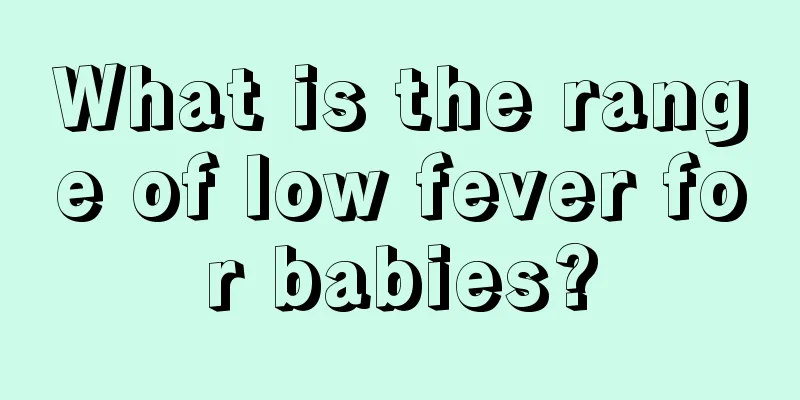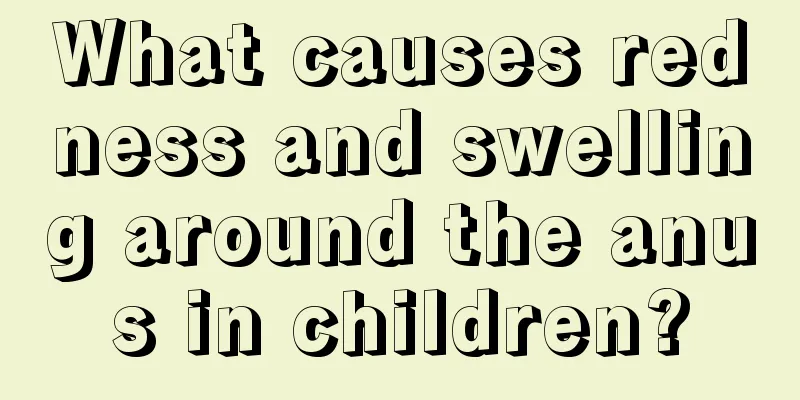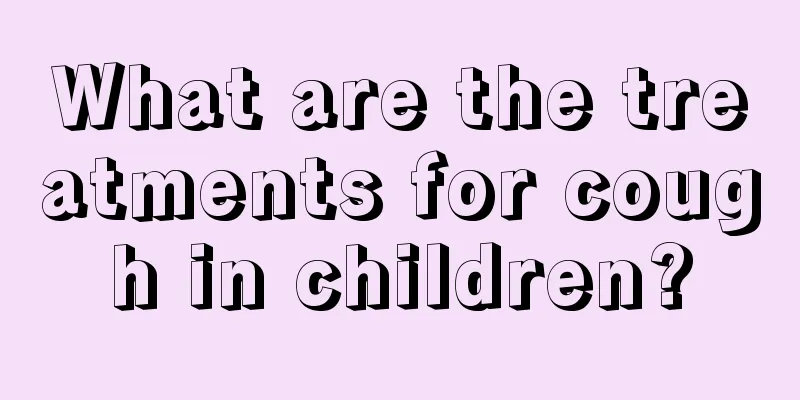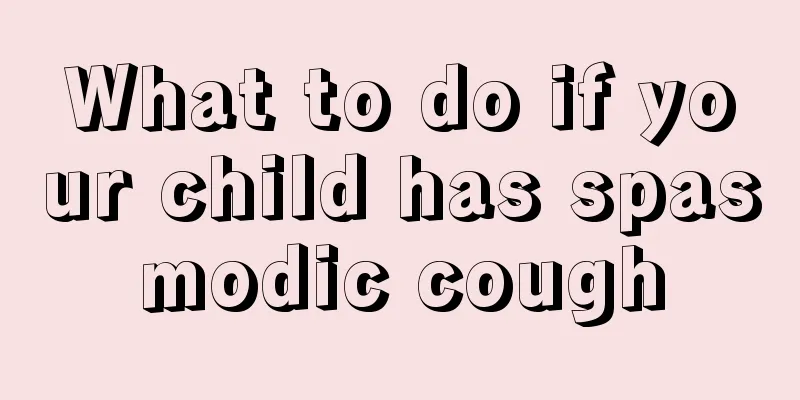What is the range of low fever for babies?

|
Many parents do not know the difference between low fever and high fever. They think that low fever is lower than normal body temperature, and high fever is higher than normal body temperature. This understanding is completely wrong. What is the range of a baby's low fever? A baby's low fever temperature is between 37.5 and 38 degrees. A fever above 38 degrees is considered a moderate fever, and a fever above 39 degrees is considered a high fever. Parents, let’s learn more about it. 1. What are the degrees of low fever and high fever? In the pediatric outpatient clinic, there are long queues of children coming to see a doctor due to fever every day. Simple colds, infectious diseases, etc. can cause children to have a fever. Most parents understand the concept of fever, but few have a clear understanding of the degree of low-grade and high-grade fever. This can lead to parents improperly handling their children's fever, causing the child's low-grade fever to turn into a high-grade fever. So what are the degrees of a low-grade fever and a high-grade fever? Children between 1 and 3 years old are considered infants and toddlers. Their metabolism is faster than that of adults, so their basal body temperature is higher than that of adults. Generally speaking, the normal body temperature of infants and toddlers should be between 36 and 37.5 degrees. It should be noted that the body temperature of infants and toddlers is prone to fluctuate. If the child's body temperature is above 37.5 degrees and below 38 degrees, it is a low fever. Between 38.1 and 39 degrees is called a moderate fever. Between 39.1 and 41 degrees is a high fever. Anything over 41 degrees Celsius is considered hyperthermia. Since the body temperature of infants and young children is prone to fluctuate, a temporary increase in body temperature may be normal. In other words, a child's increased body temperature does not necessarily mean that he or she has a fever. If the child's body temperature fluctuates temporarily, but there are no abnormalities, and the child's appetite and mental state are good, parents do not need to worry too much. 2. Which is more serious, a high fever or a low fever? Most parents learn about children's fever from books. Another part of the information comes from friends and colleagues, and a small number of parents learn about their children's fever from medical staff. This lack of systematic understanding affects parents' management of their children's fever. Many parents are not particularly worried when their children have a low fever, but become overly anxious once the fever turns to a high fever. In fact, a high fever is not necessarily more terrible than a low fever, and a low fever is not necessarily safer than a high fever. Compared with high fever, what pediatricians are most worried about is that the child "cannot get rid of the fever", that is, the child always lingers in a low fever state. Fever is actually a self-protection mechanism activated by the human body after encountering a disease. It is a manifestation that the body is fighting the infection, so high fever or low fever does not represent the severity of the disease. Although some children have high fever, they are in good spirits and their eating and drinking are not affected. In fact, the high fever at this time is not scary at all. However, for children who are weak and sickly, due to their poor immune system function, the immune system cannot mobilize its strength to fight pathogens when they invade. Therefore, even if the condition is very serious, the body temperature continues to hover in a low fever state, which is actually very dangerous. Long-term low-grade fever will affect the child's body's regulatory function, reduce the body's vitality, and make the child's physical fitness weaker and weaker, so parents should pay attention to their children's low-grade fever. |
<<: Children often have low-grade fever
>>: Will the baby's skin peeling after being burned leave scars?
Recommend
Is it harmful for girls to be weaned late?
We all know that breastfed children have high res...
Four-month-old baby's brain development
For four-month-old babies, they have just started...
What should I do if my child has a cowardly character?
Personality is mostly determined by innate factor...
What to do if your child doesn't like to sleep
Children's reluctance to sleep is a problem t...
The child has frequent urination recently
Frequent urination not only occurs in adults, but...
Reasons why 1-year-old babies are restless when sleeping
Parents will find that many babies are always aff...
How to deal with being stung by a sugar baby
Tangbao is the name from a TV series. This insect...
How long does it take for a baby to grow a tooth?
Babies start to grow teeth when they are about on...
Which calcium supplement is good for a two-year-old baby?
A two-year-old child can be said to be relatively...
What to do if baby has bubbles at the corners of mouth
Children are meant to be protected by their paren...
What should I do if my baby has less hair on the top of his head?
Many babies are born with very little hair, which...
What's wrong with baby's eye bags?
For mothers, if they find that their babies have ...
At what age can babies eat pineapple?
Babies are different from adults. There are many ...
What is the difference between childhood loneliness and autism?
Although early detection of autism is sometimes m...
Examination and treatment of hand, foot and mouth disease
The children around us are greedy and love to pla...









